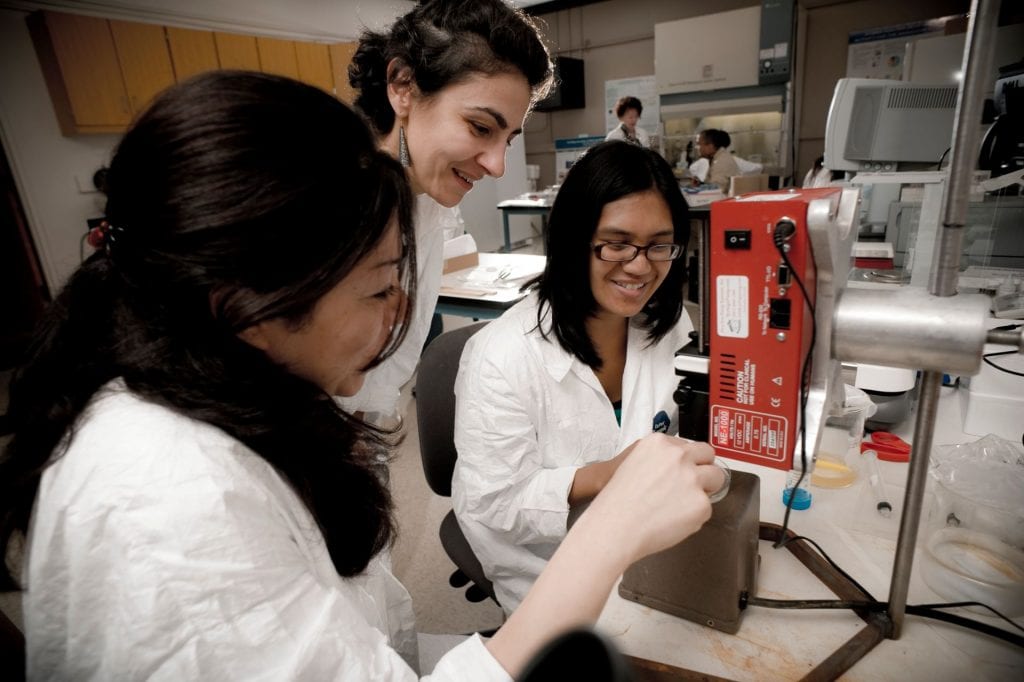Dr. Mary A. Papazian
National Engineers Week is an ideal time to write about the importance of preparing our graduates for the changing 21st century workforce.
Ultimately, our core mission is to ensure that our students graduate with the tangible skills and knowledge they will need to be successful and to thrive in their post-collegiate careers and in service to their communities.
At the same time, there are “softer” skills that must be developed as part of their formal education: Collaboration. Discipline. Critical thinking. Oral and written communication. Working in diverse environments. Commitment to values of respect and inclusion. We know that those lacking in these “soft” skills will find a “hard” road ahead.
As the only public university in Silicon Valley—one that supplies nearly 10,000 graduates to the global economy each year and with more than 200,000 alumni working in the Bay Area—SJSU has a unique relationship with Silicon Valley companies, the companies that are creating the innovation economy of the future. Large Silicon Valley companies are expanding to other regions of the country—see Apple, Amazon, Google and Facebook, among others. Tech and data analytics are becoming core to all industries, from manufacturing, automotive and agriculture to healthcare, financial services and beyond.
Concurrently, the greatest advances in technology, such as artificial intelligence and machine learning, are impacting all industries as automation transforms work in foundational ways.
While careers in large and small tech companies may dominate our region, we are not only focused on technical and scientific careers at San Jose State, nor should we be. Last month, you might recall my blog post about the teaching profession—and what San Jose State is doing to make it a viable, attractive career path.
In Atlanta recently, I participated in a panel discussion at the American Association of Colleges and Universities’ Forum for Presidents and Foundation Leaders meeting, the theme of which could not have been more timely: The Future of Liberal Education in a Post-Truth Era. Specifically, I joined colleagues from Concordia College, MN; Wake Forest University; and the Art & Science Group as we explored how to build a competitive advantage for our liberal arts graduates.
A core issue we discussed was the difference that colleges and universities can make to students and how we might see the 21st century as a period desperately in need of the liberal arts, not in isolation from, but in partnership with, technology and STEM disciplines.
What we see in Silicon Valley—and what we read about in report after report on the future of work—is that skills in technology and data analytics are best developed in harmony with foundational skills in the liberal arts. In fact, more liberal arts graduates are hired in Silicon Valley than STEM graduates, and many go on to lead storied technology companies.
Google, in fact, has found that its most innovative teams were those that included strong representation from the liberal arts. While SJSU proudly boasts the largest engineering school on the west coast—enrolling more than 7,500 graduate and undergraduate students—our most innovative programs are those that bring together science and technology with the humanistic side of the liberal arts.
For example, our Paseo Public Prototyping Challenge addresses social and environmental challenges in the city of San Jose through a nine-month, multidisciplinary collaboration and technological effort, one where humanities-related disciplines must be included. The most recent Paseo Challenge launched in late November and runs until the end of August. I am excited to see what kinds of solutions to local problems our students come up with this year!
Likewise, our biomedical device industry partnership program brings engineers together with students across the social sciences and humanities to address health-related challenges. The Biomedical Engineering Society at SJSU will host the 10th Annual Bay Area Biomedical Device Conference on April 3. Biomedical engineering, the newest program in our engineering college, was started in 2011, with industry input, in response to the rising importance of the biomedical device industry in the region.
Our College of Humanities and the Arts is actively involved with our Deep Humanities Initiative, where students and faculty members are interrogating issues of ethical responsibility, the power of the aesthetic and the meaning of the “human” in a technology-filled world. A recent highlight, of course, was the 200th Anniversary of Mary Shelley’s Frankenstein: uncovering challenges of technology on human society and what it means to be human in a technological world.
Finally, let us not forget our design programs, such as those housed in our Department of Design (including animation and illustration) and the digital media art master of fine arts graduate program in our CADRE Institute. These programs, meant to reflect the spirit of innovation in Silicon Valley, provide excellent examples of how liberal arts and technology work hand-in-hand with one another.
We continue to have conversations with Silicon Valley companies about the many programs we offer to students to ready them for the innovative economy into which they will graduate.
The takeaway is that we need not apologize for the liberal arts, but instead, we must become more nuanced about how we engage with them, seeing the liberal arts as foundational for solving the problems of our time.
While some students will become researchers advancing the boundaries of technology, such as artificial intelligence and machine learning, most graduates will think about how to apply these technologies for solving the problems around them—in healthcare, urban planning, the environment and other industries.
As collectively we celebrate National Engineers Week, San Jose State continues its tradition of delivering a four-year university education to our diverse community of students, one that includes a foundational liberal arts general education and disciplines that have an element of direct—but not narrow—career preparation and the possibility of career mobility at a time when many of the jobs of the future have not yet been invented.
After all, our students are—to borrow from Thomas Friedman—the Next America.
